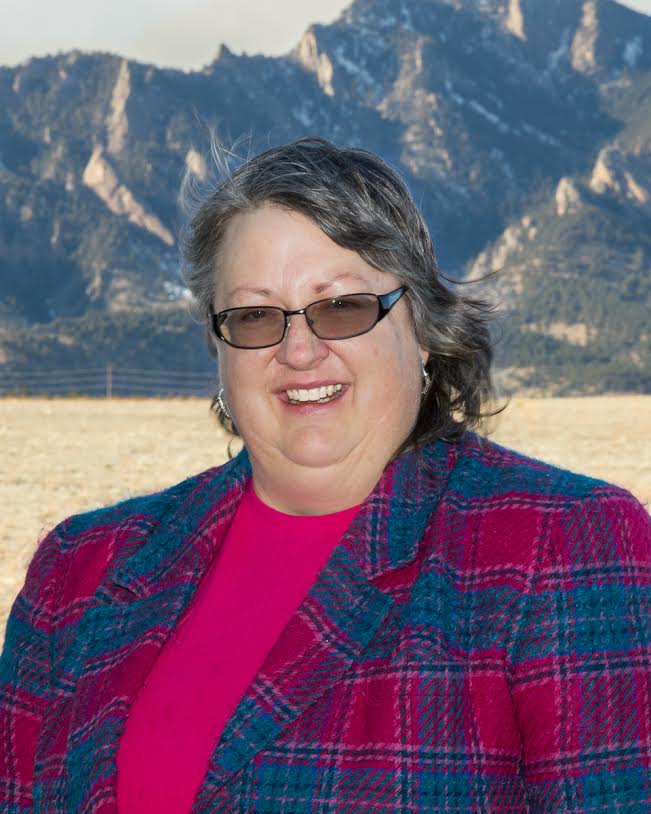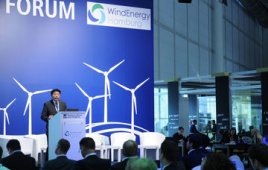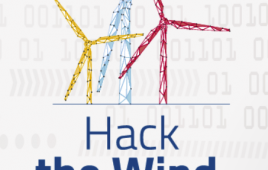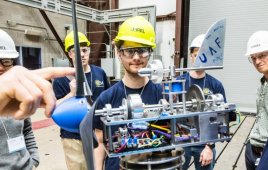A wind-power industry veteran since the mid-90’s, Trudy Forsyth graduated from the University of Colorado-Denver in the late 80’s with a B.S. and M.S. in mechanical engineering. She is currently managing director of Wind Advisors Team, a consulting firm specializing in small and distributed wind standards and policies.
Despite almost 20 years in the wind industry, it wasn’t always an easy road for Forsyth. Women engineers were almost unheard of in the early 80’s. Ten women graduated from the bachelor’s program and only two remained in engineering after five years in the workforce. Forsyth was one of them.
She recently gave the keynote address at this year’s Women of Wind Energy (WoWE) annual luncheon, which took place at the American Wind Energy Association’s (AWEA) WINDPOWER 2015 Conference & Exhibition in Orlando, Florida. Celebrating its 10th year, WoWE promotes the education, professional development, and advancement of women in the renewable energy workforce.
In her presentation, Forsyth discussed the lessons she’s learned as a women engineer and that she would like to impart to others in the field. Each year WoWE grants support to women students, funding their registration and travel expenses to the WINDPOWER conference.
“Get comfortable being conspicuous,” she said during her speech. “You’re going to stand out as a woman engineer no matter what you do, what you say, or what your goals are because our numbers haven’t increased since the 80’s.” Forsyth noted that the number of female engineers has remained steady at around 15% though she would love to see that percentage increase.
“I believe there are some women who don’t turn to engineering because they fear standing out in the crowd, and that’s a shame,” she said.
With a career that began in the aerospace industry before shifting to wind power, there are times along the way that Forsyth felt isolated as a female engineer, but one of her lessons learned was not to take things personally.
“Find a way to be heard,” she encouraged. “Find a way to communicate so people will hear you. Women often have a very large toolbox of communication skills from which to choose from and it’s important to use those skills.”
Forsyth has developed and relied on her own toolbox of skills over the years. Her resume includes success as the program leader for the National Renewable Energy Laboratory’s (NREL) distributed wind turbine program, which included small and medium wind turbines. Since 1995, she coordinated efforts between the NREL/National Wind Technology Center technical staff and U.S. manufacturers for designing and testing new small wind turbines, accredited testing of commercial small wind turbines, and publishing turbine field performance and test reports.
Along with authoring and co-authoring several technical papers, she also co-led the development of the second and third revisions of the International Electro-technical Commission (IEC) Small Wind Turbine Design standard (61400-2) and the International Energy Agency Recommended Practice on Consumer Labeling of Small Wind Turbines.
Aside from helping manage the Wind Advisors Team, Forsyth serves as board president for the Small Wind Certification Council, past-president and co-founder of WoWE, and it’s of little surprise that she was honored as the organization’s 2014 Woman of the Year. As if wind power wasn’t enough, she is also a past board member for the American Solar Energy Society.
“Lead by example but let others alongside you grow as well,” she said during her keynote speech, stressing how important it is to work hard but to also recognize and foster the strength and development of co-workers. “You owe it to the next generation and to the renewable industry to work hard and help others flourish.
For a digital copy of the entire June issue of Windpower Engineering & Development, click here.
Filed Under: Innovators & influencers





